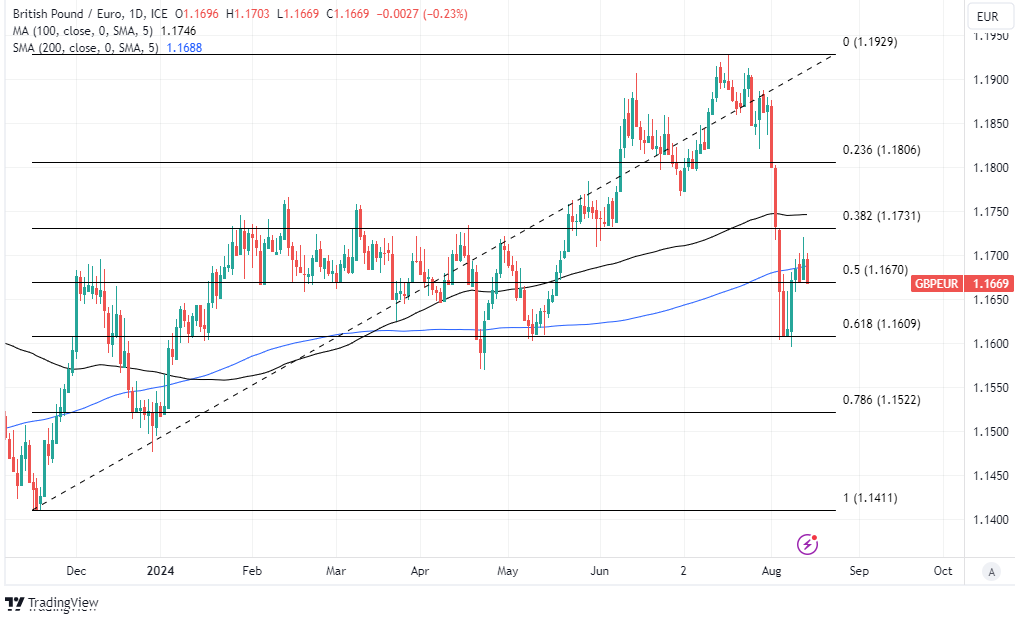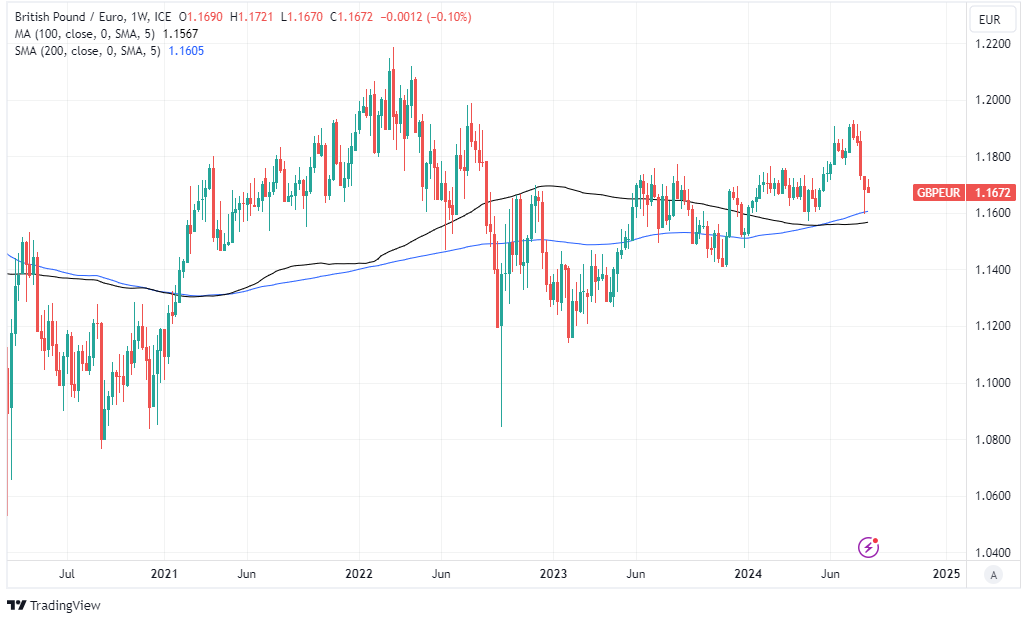
Image © Adobe Images
The Pound to Euro exchange rate recovery from early August’s lows could extend further up ahead, according to a trader at J.P. Morgan, who's a seller of EUR/GBP and is looking for a push below the nearby 200-day moving average.
Sterling ebbed from one-week highs against the Euro on Wednesday after a widely anticipated rebound for UK inflation in July underwhelmed expectations, and after the core inflation rate fell further than expected.
Whether it’s able to recover and hold above the nearby 200-day moving average at 1.1688 will be key to whether the recovery off early August lows can extend further in the days ahead, according to one trader.
“If it can remain below the 200 DMA at 0.8555, then EUR/GBP should extend its move lower. Interestingly, SHF, who had been on an eight day sell streak, have now bought for two consecutive days,” said Beatrice Antunes, an analyst on the spot FX desk at J.P. Morgan in London, in a Tuesday commentary. “I remain short.”
Previously, GBP/EUR regained its 200-day moving average on Tuesday before advancing further to test the 38.2% Fibonacci retracement of its July fall up around 1.1723, aided by a better than expected UK jobs report and steadier global markets that have created scope for further gains, according to J.P. Morgan’s Antunes.
Above: Pound to Euro rate shown at daily intervals with Fibonacci retracements of July downtrend and 100-day moving average (black) indicating possible areas of technical resistance, while the 200-day average (blue) denotes prospective support. Click image for closer inspection.
Tuesday’s surprise fall in the UK unemployment rate and increase in employment for May and June was widely seen as encouraging of the view that the Bank of England is likely to remain cautious in delivering further cuts to interest rates, hence the short-lived sell-off in the UK government bond market and rally for yields.
The market’s relatively hawkish outlook for Bank Rate prices just 41 basis points of cuts for the rest of the year and places Sterling on course to become the second highest yielding currency in the G10 grouping by year-end, despite the UK also having the second lowest CPI inflation in the G10, behind only Switzerland.
Sterling’s high yield is part of why strategists at BofA Global Research have advocated buying into any dips against the Euro and Swiss franc up ahead, as both GBP/EUR and GBP/CHF are also expected to benefit as the European Central Bank and Swiss National Bank cut interest rates further, or faster than the BoE.
“We continue to expect a mixed EUR performance in the rest of '24, in line with a rather "middle of pack" ECB (given market pricing) and constructive risk sentiment,” they said in a Tuesday note to clients.
“We like EUR vs. CHF, USD, and JPY, but would fade rallies vs. GBP, AUD, Scandies, counting on supportive risk sentiment. Positioning is mostly light, but we would not dismiss EUR-GBP and EUR-AUD shorts,” they added.
Above: Pound to Euro rate shown at weekly intervals with selected moving averages.


